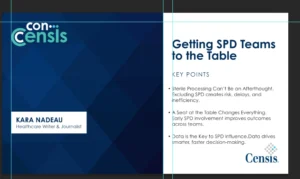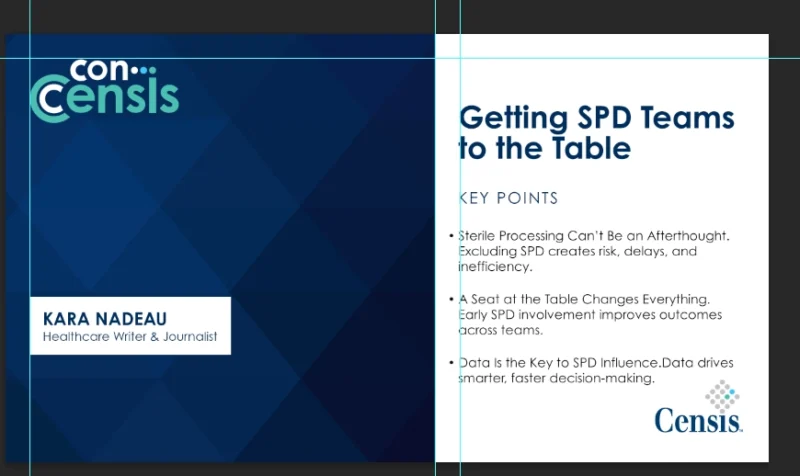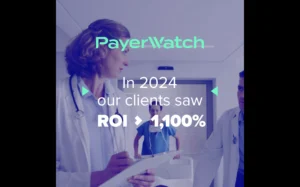Navigating COVID-19 and Other Disruptors with Proactive Performance Analysis
During a pandemic like the one currently brought on by COVID-19, much of your attention is rightly focused on how you can best respond to the challenges presented by increased patient volumes and supply chain breakdowns. However, while documentation and coding may be back-of-mind at the moment, you can only truly assess how your hospital and staff are performing and drive immediate change by accurately and proactively capturing your data.
“As we know, the ability to analyze performance is only as good as the underlying data itself. So, it’s important organizations are diligent now so that there are trustworthy insights down the road to use as a tool to learn and improve into the future,” said Lindsey Klein, General Manager and driving force behind Quantros’ data analytics tool’s evolution.
Attention to detail and thorough coding work now will prepare you for disruptions in the future and allow you to both gain valuable insights from this pandemic and mitigate potential long-term effects of this crisis.
Being Proactive in the Absence of an ICD-10 Code for COVID-19
The novel coronavirus currently spreading across the globe is officially labeled “severe acute respiratory syndrome coronavirus 2,” or SARS-CoV-2.
By extension, COVID-19 refers to all respiratory infections brought on by contraction of SARS-CoV-2.
The Centers for Disease Control and Prevention (CDC) published the final guidelines for the new diagnosis code U07.1, COVID-19, effective April 1 to September 30, 2020, and ensuring you’re correctly classifying patients, and that the data you collect from this period is actionable and beneficial upon review, is critical.
While the official ICD-10 code is crucial moving forward, there are numerous other measures hospitals should be taking to ensure accurate data for both reporting and future analysis.
“To get a true understanding of performance during this pandemic with both COVID and non-COVID populations we recommend that organizations go back to cases before the formal code was released on April 1st and re-code/re-bill those cases using the new code,” said Lindsey Klein.
Additional measures that will aid hospitals and health systems in capturing a complete picture of their performance during this time include:
- New codes for Confirmed Exposure (Z20.828), Possible Exposure Ruled Out (Z03.828) and COV-19 testing (CPT code 87635) are integral for tracking the spread of the disease and analyzing the success of containment measures
- CPT codes 94001-94005 help track the demand for ventilators among COVID patients
- Capture co-morbid and chronic conditions in addition to demographic and social determinants to allow you to conclude which patient populations were truly the most vulnerable and where mortality and complication risks were greatest
Acting Now to Boost Response to Ripple Effects of COVID-19 and Future Disruptions
Documenting and coding in a way that will make sense upon review as the pandemic’s impact recedes, means you can ensure that you’re taking appropriate steps to not lose sight of the larger picture in the wake of increased demand and stressors brought on by the disease. Considering questions surrounding the direct effect of COVID-19, can also help you gain true understanding of the totality of your operations and care during this uncertain time.
Those questions include:
- Which populations were most affected by the virus, and could we have done anything to adjust care to improve their outcomes?
- What steps are we taking to provide pre-pandemic levels of care for patients with other diagnoses – cardiac patients, stroke victims, etc. – during this time? Are they enough?
- Are we working with an eye toward the long-term or simply trying to keep up with the current pace of the spread of COVID-19?
- How many resources (of various types) did we use, and how many of those resources do we need to keep moving forward?
- Did telehealth play a positive role in our response and, if so, what is our approach to telehealth as a more widespread patient option moving forward?
- What could be the consequences for patient of delaying elective procedures, and how do we prevent those patients from having poor outcomes once we resume elective operations?
Being diligent now will enable you to assess your response to this pandemic through critical coding data and reporting, to in turn, ease the potential damage left in the wake of this period.
Prepping for the “New Normal”
Many agree – there will be no “back to normal” once this crisis is over. The COVID-19 pandemic will likely catalyze and accelerate the long anticipated “transformation of healthcare.”
However, rapid change can be viewed as positive. The healthcare industry and its regulators are aggressively adopting a contemporary service mindset and the modern tools and technologies that come with it. While the catalyst for this overhaul is certainly a frightening one, the end result could be a system more ready to act the next time something of this scale occurs.
Consider how hospitals adapt to hurricanes and other natural disasters. Once the immediate threat has passed, collaboration, careful study, and accelerating the implementation of strategies on a hospital-by-hospital, regional, and national basis help healthcare systems be more prepared for future emergencies.
The healthcare system’s continued march toward telehealth, predictive analytics, beneficial and actionable data analysis, and the sharing of that data is going to be accelerated by the collective response to COVID-19, and, by being diligent, you can do your part to ensure that change is a lasting one.
Quantros Is Ready to Partner with You in Being Agile and Proactive
Quantros understands the lasting impact on your data, performance, and system this pandemic will have, and we’re actively working to deliver beneficial solutions as quickly as possible.
We’re currently working to build increased functionality into our industry-leading solution, helping you achieve not only better care now, but key insights that will promote agility in the face of similar challenges in the future.
“It’s is unclear today exactly how COVID-19 will change healthcare in the US or globally. In the short term, it will clearly stress the US healthcare system’s capacity and strain hospital systems financially. We may see smaller health systems unable to weather the storm. Longer term, the healthcare system will need to develop better pandemic readiness. It is unclear how much of that can, and will, be solved for by the private sector vs the government. One thing is clear, some things will never be the same,” Trey Cook, Quantros CEO weighed in.
Documentation and coding may not be your first priority as you attempt to mitigate the ripple effects of COVID-19, but it’s a vital linchpin in correctly evaluating where your hospital ranks and ensuring you don’t experience lingering repercussions associated with less-than-optimal outcomes during tumultuous times.
To learn more about how Quantros is committed to helping you accomplish those key goals, contact us today.









